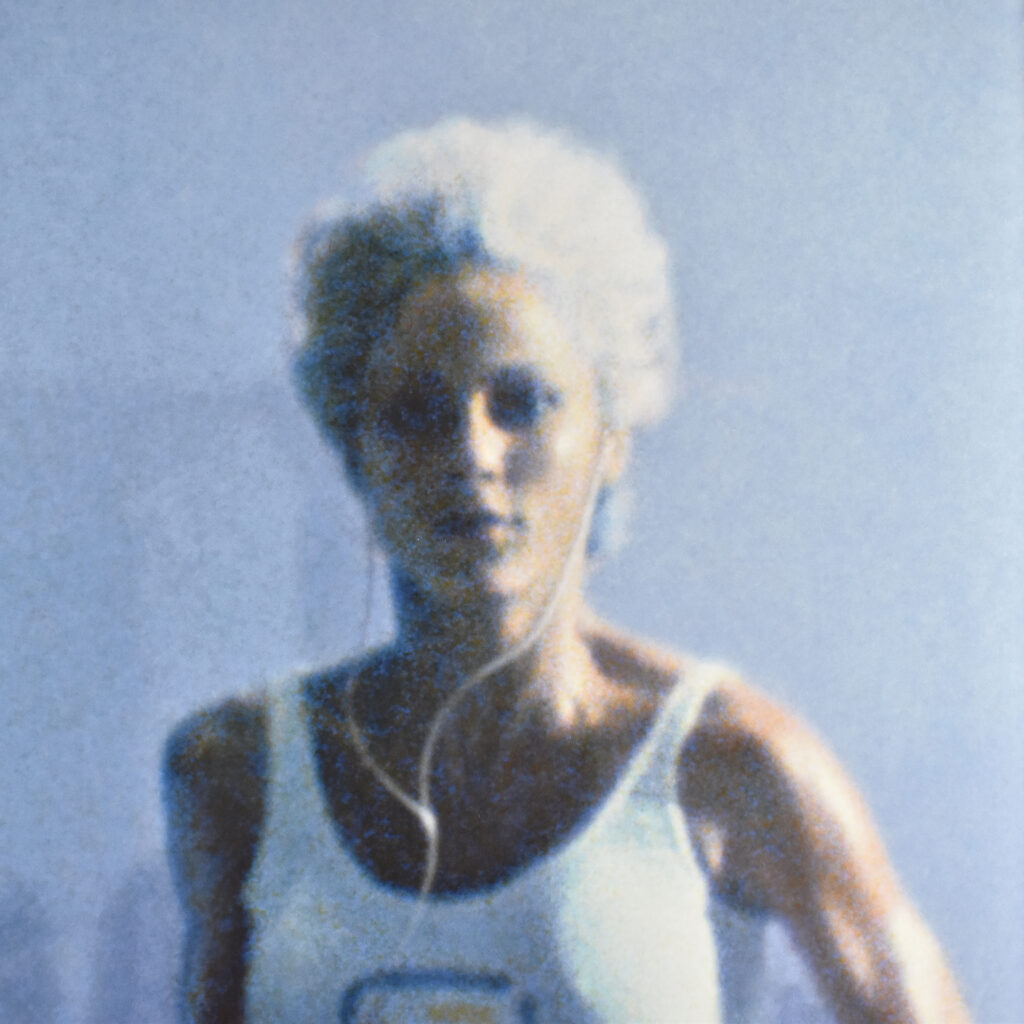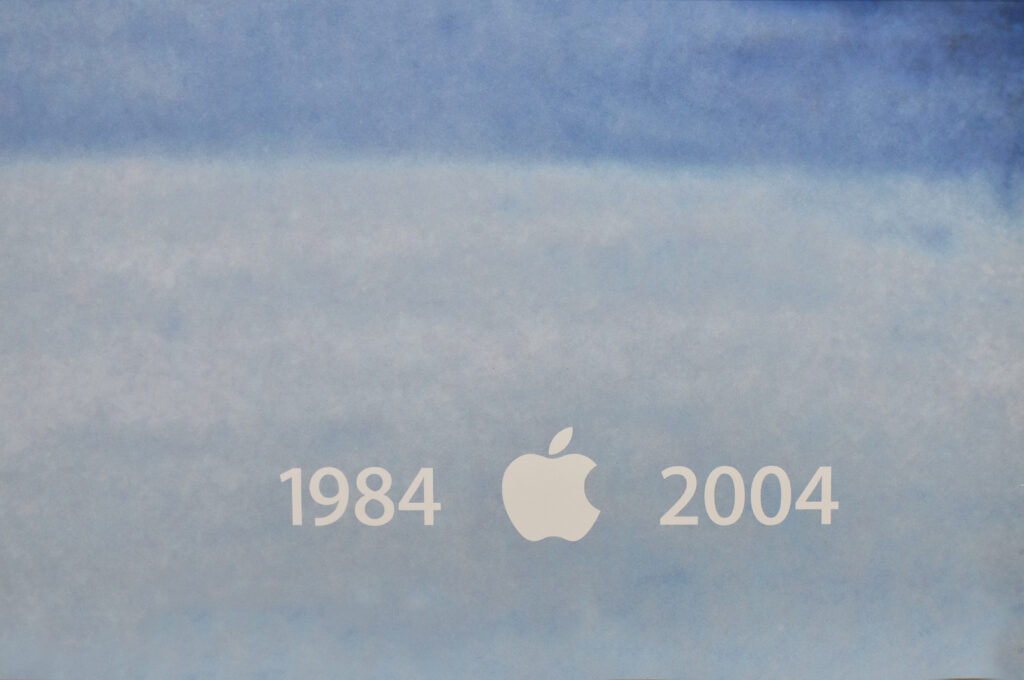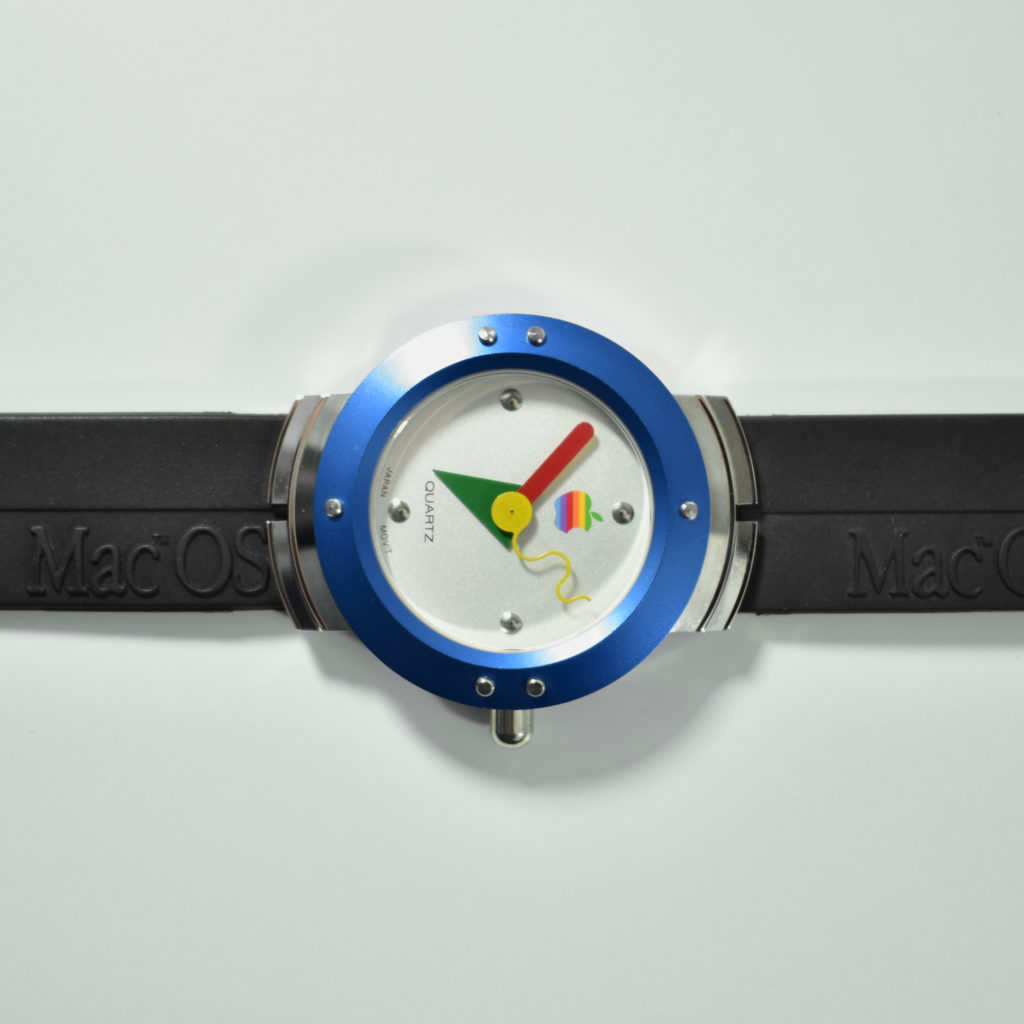In early January 2002, Apple introduced a major design update to the iconic original iMac design. Previously the iMac was an all-in-one CRT-based design available in translucent and transparent colors and designs. The new 2002 design remained an all-in-one computer, but used a half-sphere white base, a chrome adjustable arm, and a “floating” flat-panel display.
Apple described the design in a press release:
“Apple today unveiled the all-new iMac, redesigned from the ground up around a stunning 15-inch LCD flat screen that floats in mid-air—allowing users to effortlessly adjust its height or angle with just a touch.”
The 2002 iMac was available in 15- and 17-inch models. This 24 x 36 inch poster depicts the 15-inch iMac on a white background and adds a reflection under the base. The text is printed in Apple Garamond, “The new iMac. Macworld San Francisco 2002.” and is followed by a gray Apple logo.
Also notable, this iMac has a screen showing Mac OS X. The icons in the Dock include Finder, Mail, Microsoft Internet Explorer, iTunes, iPhoto, iMovie, iDVD, AppleWorks, Sherlock, QuickTime Player, System Preferences, and Trash. The inclusion of iMovie and iDVD underscored the addition of the SuperDrive “for playing and burning custom CDs and DVDs” as standard equipment on this iMac.
Although this poster (and the iMac itself) used the Apple Garamond font, later versions of this iMac design would switch to the Apple Myriad font.
Source: Apple





































